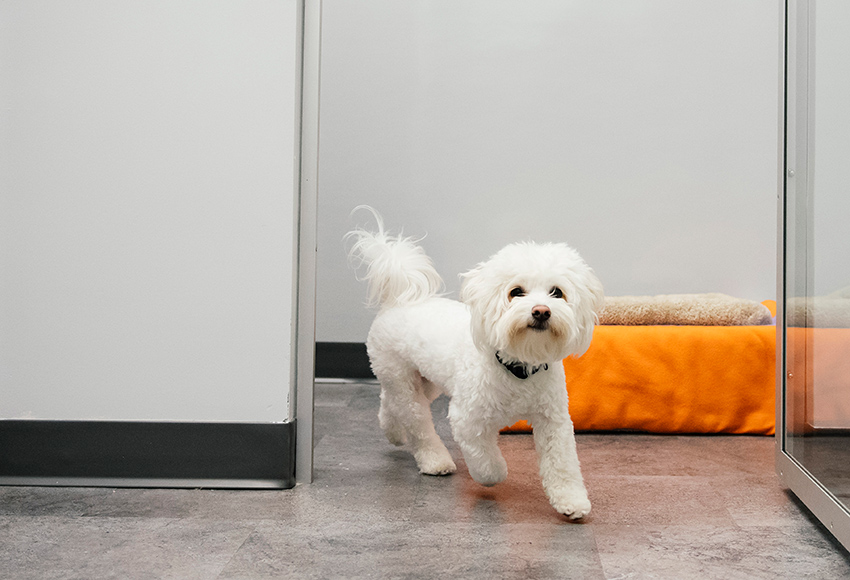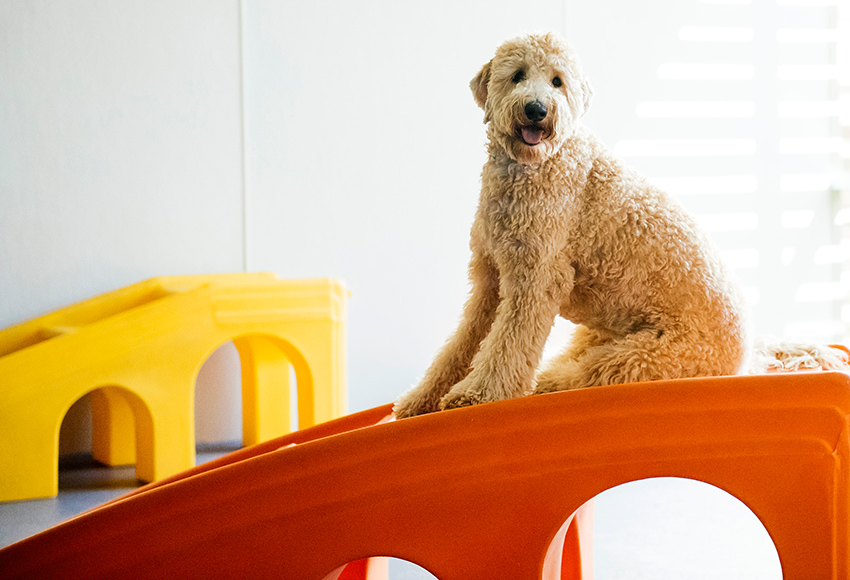Tips for a happy dog in snowy conditions!
January 3, 2025

If you’re taking your dog out in the snow, it’s important to keep their safety and comfort in mind. Here are some tips to ensure your dog stays happy and healthy in snowy conditions:
- Protect their paws:
- Snow and ice can be harsh on your dog’s paws, causing dryness, cracking, or irritation. Consider using booties to protect their paws from the cold and sharp ice. If your dog won’t tolerate booties, make sure to wipe their paws clean after each walk to remove salt and ice buildup.
- Use paw balm to moisturize and protect their paws from becoming cracked or irritated.
- Watch for signs of discomfort:
- Cold temperatures can lead to hypothermia or frostbite, especially for small dogs, short-haired breeds, or older dogs. Signs to watch for include shivering, lethargy, or whining. If you notice these signs, bring them inside immediately to warm up.
- Snow can also cause dogs to get snowball-like clumps of ice stuck between their paws or fur. Regularly check for this and remove the snowballs promptly.
- Keep walks short and safe:
- Shorter walks are usually better when the temperature is very low, as prolonged exposure to the cold can be dangerous. Make sure your dog stays active to generate body heat but avoid overexertion in deep snow.
- Dress appropriately for the weather:
- Some dogs may benefit from a winter coat or sweater, especially smaller or short-haired breeds. This can help keep them warm during walks and prevent them from getting too cold.
- Consider getting a waterproof jacket if your dog is spending a lot of time in deep snow or wet conditions.
- Hydrate and nourish:
- Just because it’s cold doesn’t mean your dog should skip regular hydration. In fact, snowy weather can make dogs more susceptible to dehydration if they’re not drinking enough. Make sure fresh water is always available.
- Avoid harmful substances:
- Salt and chemicals used to melt ice can be toxic to dogs. Try to avoid areas that are heavily salted, and make sure to wipe your dog’s paws after walks to prevent ingestion of harmful substances.
- Watch for frozen ponds, lakes, or streams, as thin ice can be dangerous for both you and your dog.
- Supervise in the snow:
- Always supervise your dog in deep snow or icy conditions. They might be prone to getting stuck, falling, or even eating things like snow or ice that could cause them harm.
- Dry off after outings:
- After you’re back inside, dry off your dog with a towel, especially if they’re wet from snow or ice. This helps them stay warm and prevents them from feeling chilled.
By taking these precautions, your dog can enjoy playing in the snow while staying safe and comfortable. If your pup needs exercise and isn’t a fan of cold weather, Dogtopia of Springfield is always warm & dry! Give us a call to get started 703-982-0099.






